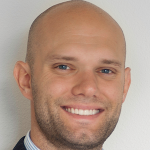Below, Walter Isaacson shares five key insights from his new book, The Greatest Sentence Ever Written.
Walter is the bestselling author of biographies of Elon Musk, Jennifer Doudna, Leonardo da Vinci, Steve Jobs, Benjamin Franklin, and Albert Einstein. He is a professor of history at Tulane University and has served as CEO of the Aspen Institute, chair of CNN, and editor of Time. In 2023, he was awarded the National Humanities Medal.
What’s the big idea?
The Declaration of Independence was shaped through collaboration, revision, and moral striving by the Founding Fathers, whose work shows that progress—whether in innovation, personal growth, or society—requires iterative improvement, purpose-driven effort, and unity to advance justice and equality.
1. Innovation is a collaborative endeavor.
We biographers have a dirty little secret. We sometimes make it seem like a guy or a gal goes to a garage, has a light bulb moment, and that’s how innovation happens. But innovation comes from working together as a team and bouncing around ideas.
Our country’s founding had a great team. It wasn’t just one great leader. You needed people like Thomas Jefferson and James Madison, who were extremely smart. You needed to partner them with people like John Adams and Samuel Adams, who were filled with passion. There was also a need for someone with high rectitude and great morality, like George Washington. And you also needed a Benjamin Franklin, whose job it was to bring everybody together when they were writing that declaration.
In June of 1776, the Continental Congress decided not to have Jefferson do it alone, but to have a committee—a team—put it together. This may have been the last time that Congress created a good committee. They sat in a rented room that Jefferson had on Market Street in Philadelphia, and wrote on a mahogany lap desk that he had brought with him from Monticello. The team went through page after page of revisions. They went through four major drafts of the Declaration of Independence.
Nowadays, that first draft (which has all their editing marks on it) is at the Library of Congress. The final one is at the National Archives, displayed for viewing in the Rotunda for the Charters of Freedom. I think for our 250th birthday in 2026, they ought to display the different drafts all together. It’s never been done that way before because the Library of Congress doesn’t quite get along with the National Archives, but if, for our birthday, we could bring it all together, we could see how teamwork made our Declaration of Independence.
2. Always revise and correct.
Everything should be an iterative process, meaning you keep making it a little bit better, a little bit better, and so on. I remember when I was working on my book with Steve Jobs, sitting in his big family room at home, as he pulled out bootleg tapes of the Beatles and how they made their different songs. Through an iterative process, they created their song, “Strawberry Fields Forever.” Jobs sat and listened as John Lennon would start something and McCartney would try something else, then somebody would chime in and they’d say, “Okay, let’s take it from the top. Let’s revise it and do it again.”
“Everything should be an iterative process, meaning you keep making it a little bit better, a little bit better, and so on.”
That was also true of Leonardo da Vinci. He didn’t just paint his beautiful paintings. He started by making an under drawing and a sketch, and then charcoal, and then filling it in some. The projects would begin as a sort of cartoon that would be the essence of the painting. Then he would paint layer after layer of brushstrokes, usually in lightly pigmented oil, so that he could make those brushstrokes overlay each other. It took da Vinci more than a decade to do that with the Mona Lisa, attempting version after version as he perfected that most amazing smile ever painted.
That was true of the great second sentence of the Declaration of Independence, too. Thomas Jefferson began the first draft of that sentence by saying, “We hold these truths to be sacred.” And you can see Benjamin Franklin crossing out “sacred” and putting in “self-evident.” His point was that we were creating a new type of nation, one in which our rights were based on rationality, not the dictates or dogma of a particular religion.
But then, the sentence goes on to say, in Jefferson’s first draft, “they’re endowed with certain unalienable rights.” And John Adams adds, “they’re endowed by their Creator with certain unalienable rights.” In the drafting and revising of just one sentence, our founders struck a balance between the role of divine providence in creating our nation and the role of rationality.
3. Your life should also be continually revised and corrected.
Throughout his life, Benjamin Franklin kept a ledger of the mistakes he had made and how he had tried to rectify each one. His greatest mistake, he realized, was more like a sin: as a printer in Philadelphia, he had owned two slaves who worked in a shop. By the 1760s, they’d wandered off, and Franklin made no effort to prevent that. He even joined an organization that established schools for blacks and freed slaves. His journey culminated in 1787, when, at the age of 81, he accepted the presidency of the Pennsylvania Society for Promoting the Abolition of Slavery. He was not a perfect man, but he kept trying to perfect himself.
The moral arc of American history during its subsequent 250 years mirrors the personal narrative of Franklin’s life. As we head into our 250th, let’s not just celebrate our goodness or, for that matter, just assail our flaws. Let’s celebrate our ability to revise and correct ourselves when we get things wrong.
For example, Abraham Lincoln opened his Gettysburg Address in 1863 by referring directly back to that second sentence of the Declaration. He said, “Four score and seven years ago our fathers brought forth on this continent, a new nation, conceived in Liberty and dedicated to the proposition that all men are created equal.” At a cost of close to 620,000 lives, including 7,058, buried at that cemetery in Gettysburg, the Civil War brought an end to slavery.
“Let’s celebrate our ability to revise and correct ourselves when we get things wrong.”
“The arc of the moral universe is long, but it bends toward justice,” said Martin Luther King Jr., echoing an 1853 sermon by the abolitionist minister Theodore Parker. But it’s important to remember the arc didn’t bend itself. This was and remains a constant American struggle: to make the phrase “all men are created equal” truly inclusive by revising and correcting our mistakes as we go along.
4. Connect your passion to something larger.
When I graduated from college, I remember what the minister of the Memorial Church in our college said during the baccalaureate sermon. The name of the sermon was “What We Forgot to Tell You.” In it, he said that he asked a student, “What do you want to be when you leave college?” And the student said, “I want to be powerful. I want to be successful. I may even want to be president.” Reverend Gomes replied, “Aim higher. Our college has put out a lot of successful people, and it’s even put out a few presidents, but what it needs to do is put out more good people—people who connect their passion to the causes and needs around them.”
Steve Jobs, when he was dying, sat in his back garden and I asked him, “What was it all about?” I thought he would have some great reply about how the iPhone helped connect the world. But he said, “What it’s really all about is what my guru in India taught me. He said life is like a river. And if you’re very successful, you get to pull things out of the river. But at a certain point near the end of your life, you realize it’s not about how much you get to take out of the river, it’s how much you get to put into the river—what ideas, inventions, thoughts, paybacks you’ve done that people in the future will be able to find in that river.”
Benjamin Franklin not only helped craft the sentence that defines our American creed, but he also lived it by putting things back in the river. He organized a police corps, a fire corps, a street sweeping corps, a public library, a hospital, and a school that became the University of Pennsylvania. He also created a widow’s pension fund and a mutual insurance cooperative. He ran a newspaper that was dedicated to publishing a wide variety of opinions, following no party line. On his deathbed, he bequeathed a revolving loan fund for young people to start enterprises. During his lifetime, he donated to the building fund of every church built in Philadelphia, and he helped lead the fundraising for a new hall that would provide a pulpit for visiting preachers of any belief. As he put it in the fundraising letter: “so that even if the Mufti of Constantinople would send a missionary to preach Mohammedanism to us, he would find a pulpit at his service.” He left this world as the largest individual contributor to Mikveh Israel, the first synagogue built in Philadelphia.
“It’s not about how much you get to take out of the river, it’s how much you get to put into the river.”
When he died, 20,000 mourners watched his funeral procession, which was led by all the clergymen of every faith in Philadelphia, walking arm in arm. That’s what our founders were fighting for 250 years ago. And that’s what we must continue to fight for today, so that we can preserve for ourselves and our posterity, the rights and aspirations we all share, including to life, liberty, and the pursuit of happiness.
5. Hang together.
When we were young, we were taught to hold hands when crossing the street. That’s still a good lesson for today. We as individuals, and we the people as a nation, still have many dangerous streets to cross.
At the official signing of the Declaration of Independence, John Hancock, the president of the Continental Congress, wrote his name with a famous flourish. “There must be no pulling different ways. We must all hang together,” he said. And Benjamin Franklin replied, alluding to what would happen if their revolution failed, “Yes, we must indeed all hang together. Or most assuredly, we’ll all hang separately.” As Franklin pointed out, our life-or-death challenge as a nation, whether it be in 1776 or 2026, is this: when there are so many forces dedicated to dividing us, how can we best hang together?
Enjoy our full library of Book Bites—read by the authors!—in the Next Big Idea App:










